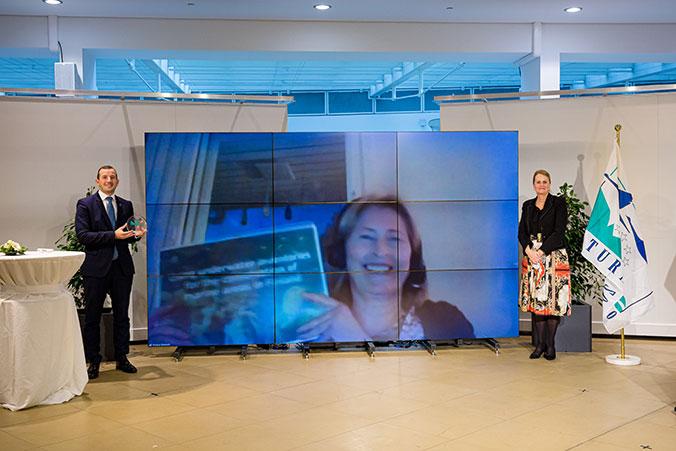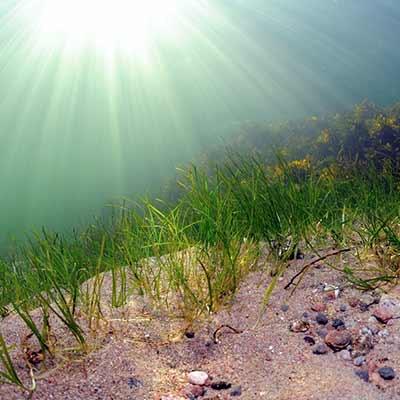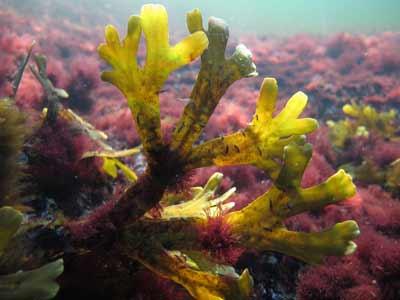
Commissioner Sinkevičius and Director General Fink-Hooijer presenting the 2020 Conservation award to Penina Blankett from the Ministry of the Environment in Finland for the application “Underwater inventories for the conservation of marine areas".
About the project
- Title
Underwater inventories for the conservation of marine areas
- Main applicant
Ministry of the Environment, Finnish Environment Institute (SYKE)
- Category
Conservation
- Countries involved
Finland
- Main N2000 site
Marine Natura 2000 sites in Finland including Saaristomeri, Tulliniemenlinnustonsuojelualue, Merikalla, Hangon itäinen selkä, Sandkallanineteläpuolinen merialue and Luodematalat
Overview
In 2004, the Ministry of Environment and the Finnish Environment Institute launched a Finnish Inventory Programme for Underwater Marine Environment, entitled VELMU. The aim is to develop a detailed and complete picture of the distribution of marine habitats and species in Finnish marine waters, and gain an insight into their conservation status. During the Ceremony, the Director General of DG Environment, Florika Fink-Hooijer, congratulated the winner and thanked them particularly for their “efforts to evaluate and quantify marine ecosystem services like CO2 retention delivering on both biodiversity and climate goals”, which show how biodiversity and climate goals go hand in hand.
So far over 150 000 spatially explicit observations have been collected of- marine habitats and species from across the entire marine waters in Finland, making this the most all-encompassing national programme for marine areas in Europe. The data have been collected through scuba diving, video methods, benthic sampling, nets, echo-sounding and remote sensing. The field data have been combined with data on environmental variables and human activities at sea to produce spatial distribution models for functionally important, rare, and threatened species.
Penina Blankett, from the Finnish Ministry of Environment, thanked the Jury with emotion for the prize: “I don’t know what to say. We are innovative because we have built a pattern of collaboration between a range of different actors.” The information collected has been analysed using state-of-the-art statistical methods, including machine learning, systematic conservation tools and supercomputing, to produce the first integrated map of marine nature values for Finland. The analysis reveals that the current protected areas only cover around one fourth of the highest nature values. The study also shows that the biodiversity hotspots are very scattered, and that the protection coverage of nature values could be doubled by adding just one percent more to the protected area coverage (from 10% to 11%). The collection and analysis of data could not have happened without successful stakeholder collaboration: “we involved those who study and those who use and plan the use of the seas. It’s a bit like a football team with each player taking care of their own field and cooperating for a common goal,” said Ms Blankett.
The VELMU data and spatial analyses have been used to develop the marine Natura 2000 areas, e.g., in SW Finland, and for reporting under the EU Habitats Directive. The nature value maps have also been used to describe around 200 “EMMAs” - Ecologically Significant Marine Areas - in Finland’s marine region. The EMMAs are based on CBD – UN Convention on Biodiversity - Ecologically or Biologically Significant Areas (EBSA) criteria, which have been applied on a spatial scale relevant for national conservation planning. In addition to developing the Natura 2000 network, the survey results can also be used in planning for the sustainable use of marine areas, avoiding excess pressures on the highest nature values.
Local event
The winners of the Natura 2000 Award in the Conservation category in 2020 held a number of events on the 17 and 18 May 2022 to celebrate their award. The Finnish Ministry of Environment was the lead partner of the winning application, the innovative “Using underwater inventories for the conservation of marine areas in Finland (VELMU)” project. The Ministry marked the occasion with a series of events to further disseminate knowledge about the project and marine biodiversity conservation.
The events began with several meetings focusing on the sustainable management of marine and Natura 2000 areas. This was followed by a field trip to the local “Liminganlahti” Natura 2000 site in Liminka Bay National Park, one of Europe’s most important wetlands, where the project partners were joined by around 35 students from a school focusing on teaching sustainability concepts.
Following a presentation given by the students, the group took part in a range of activities including birdwatching, and learning about the VELMU programme and its sampling methods. The participants continued to visit a restoration site at the Temmesjoki Estuary and finished the day with a dinner. The event concluded on the following day with a new round of presentations focusing on threatened species and restoration measures in Natura 2000 sites.
Media

Ministry of the Environment, Finnish Environment Institute (SYKE)Ministry of the Environment, Finnish Environment Institute (SYKE) 
Ministry of the Environment, Finnish Environment Institute (SYKE)Ministry of the Environment, Finnish Environment Institute (SYKE) 
Ministry of the Environment, Finnish Environment Institute (SYKE)Ministry of the Environment, Finnish Environment Institute (SYKE)
